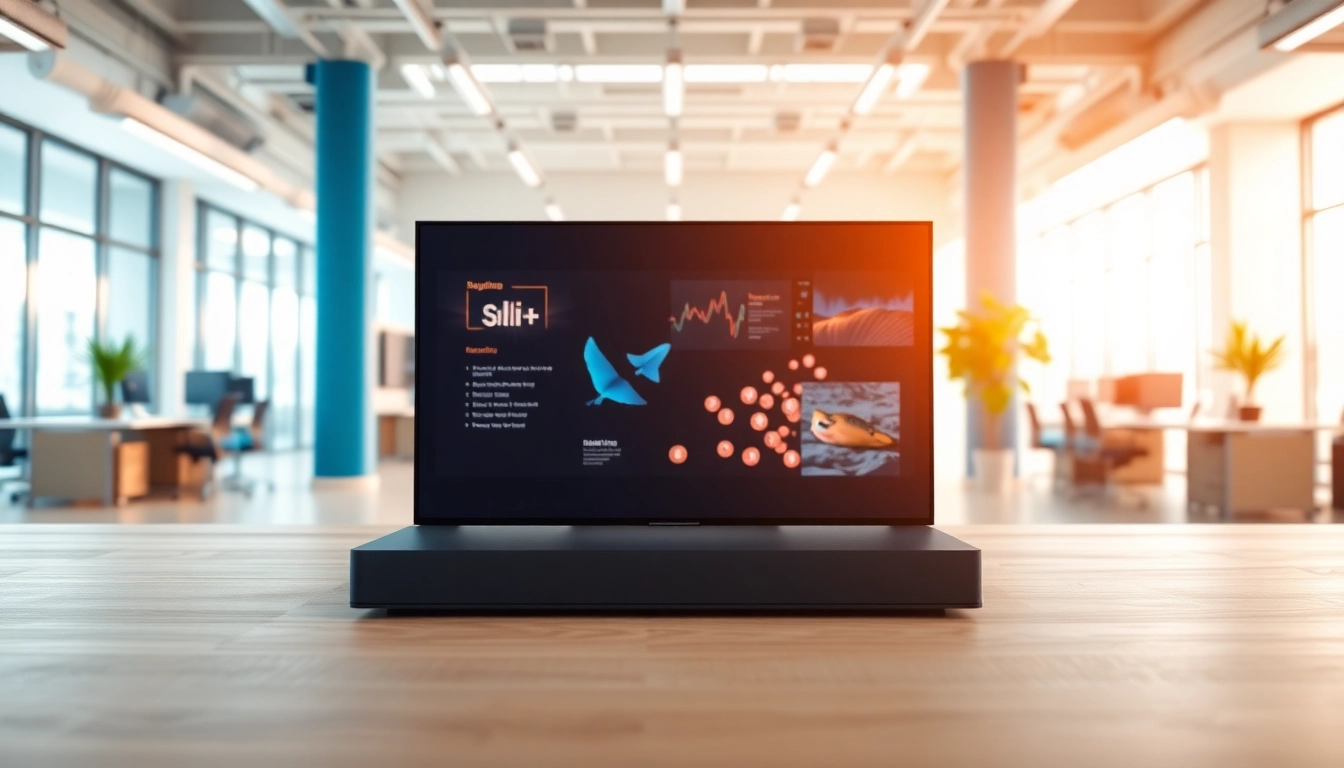Introduction to dma firmware
In today’s fast-paced technological landscape, the importance of efficient data management cannot be overstated. One essential component that plays a pivotal role in enhancing data processing is dma firmware. This specialized software provides critical functionalities that streamline the transfer of data between the computer’s memory and various devices. Understanding dma firmware is vital, as it serves as a bridge connecting hardware and software, ensuring smooth interactions across systems. For a detailed exploration of dma firmware, you can visit dma firmware.
What is dma firmware?
DMA, which stands for Direct Memory Access, is a method that allows certain hardware subsystems to access the main system memory independently of the CPU. Firmware, in this context, is a specialized type of software that is embedded into the hardware of a device, managing its functions and operations. Together, dma firmware enables devices to transfer data efficiently and quickly, without the need for constant CPU intervention. This capability is fundamental in applications that require high data throughput, such as video processing, gaming, and scientific computations.
Importance of dma firmware in modern technology
The significance of dma firmware can be seen across numerous applications in modern computing. By allowing devices to operate autonomously regarding data transfer, it frees up CPU resources, allowing them to focus on executing tasks and processing commands. This results in improved overall system performance, reduced latency, and enhanced efficiency. In devices such as hard drives, graphics processing units (GPUs), and network cards, dma firmware is crucial for optimizing throughput and minimizing bottlenecks, thereby improving user experience significantly.
Common applications of dma firmware
dma firmware is utilized in various applications that require efficient data handling. Some common examples include:
- Multimedia Processing: In devices such as digital cameras and smartphones, dma firmware facilitates rapid data transfers, allowing for high-quality video recording and quick image processing.
- Networking: Network interface cards (NICs) use dma firmware to manage data flow between the CPU and the network, playing a critical role in supporting the high speeds required for data-intensive applications.
- Gaming: Video game consoles and PCs leverage dma firmware to enable rapid data transfers between the graphics card and memory, enhancing graphical performance and responsiveness.
How dma firmware Works
To appreciate the intricacies of dma firmware, it is essential to understand its core functionalities, key components, and the data transfer processes it manages. This knowledge lays a solid foundation for effectively implementing and troubleshooting issues associated with dma firmware.
Core functionalities of dma firmware
The core functions of dma firmware revolve around managing data transfers between devices and memory without burdening the CPU. Key functionalities include:
- Autonomous Data Transfers: dma firmware enables devices to communicate directly with memory, allowing for simultaneous data transactions without CPU intervention.
- Prioritization: In systems with multiple DMA channels, dma firmware can manage data priority, ensuring that critical applications receive the necessary bandwidth and resources while maintaining system stability.
- Access Control: It carefully monitors and controls access to the memory, ensuring that data integrity and system security are preserved during transfers.
Key components involved in dma firmware
At the heart of dma firmware are several key components that play significant roles in its functionality. These components include:
- DMA Controller: The DMA controller is responsible for overseeing data transfers, managing requests from various devices, and coordinating with the CPU when necessary.
- Memory Buffer: A memory buffer temporarily stores data being transferred, allowing for smooth transitions and preventing data losses during high-speed transfers.
- Bus Interface: This component allows the DMA controller to communicate with the rest of the system, facilitating data flow between devices and memory.
Data transfer processes managed by dma firmware
dma firmware manages several data transfer processes that are integral to the system’s performance. These include:
- Synchronous Transfers: In synchronous mode, data is transferred in a predictable manner, with the DMA controller signaling the devices involved in the transfer.
- Asynchronous Transfers: Asynchronous transfers allow devices to send data independently, often resulting in faster overall execution times as multiple operations can occur at once.
- Block Transfers: Block transfers involve moving large chunks of data in a single operation, optimizing bandwidth and reducing transfer time for substantial amounts of data.
Best Practices for Using dma firmware
Maximizing the performance and longevity of dma firmware requires adherence to several best practices. By following these guidelines, users can ensure optimal functionality and minimal disruptions.
Installation guidelines for dma firmware
Proper installation is critical for the effective operation of dma firmware. Consider the following guidelines:
- Compatibility: Ensure that the dma firmware is compatible with the hardware and the operating system to avoid functionality issues.
- Vendor Recommendations: Always follow the installation procedures provided by the manufacturer to ensure that settings are configured correctly.
- Backup Existing Configurations: Before proceeding with the installation, back up existing configurations to facilitate recovery in case of installation failure.
Routine maintenance tips for optimal performance
Maintaining dma firmware involves periodic checks and updates to sustain its performance. Key maintenance practices include:
- Regular Updates: Keeping the dma firmware updated ensures access to the latest features and fixes critical bugs that may affect performance.
- Monitoring Performance: Use diagnostic tools to monitor the performance of devices utilizing dma firmware, identifying areas for improvement and troubleshooting potential issues.
- System Cleanliness: Regularly check for dust accumulation and physical damage to connectors, as these can impact data transfer effectiveness.
Safety measures while handling dma firmware
Ensuring the safety of both personnel and equipment during the handling of dma firmware is paramount. Recommended safety measures include:
- Electrostatic Discharge (ESD) Precautions: Use ESD wrist straps and work on appropriately grounded surfaces when handling hardware components.
- Power Management: Make sure all systems are powered down before making any physical changes or installations to prevent hardware damage.
- Data Backup: Regularly back up important data to prevent loss during firmware updates or unexpected failures.
Troubleshooting Common Issues with dma firmware
Even with the best planning, issues can arise with dma firmware. Understanding how to troubleshoot common problems can save time and reduce frustration during operational downtime.
Identifying error messages in dma firmware
Error messages may vary depending on the system and device but are essential for diagnosing problems. Some common error messages include:
- Device Not Responding: This indicates a possible communication failure between devices or a faulty hardware component.
- Transfer Timeout: This can occur when the DMA controller cannot complete the data transfer within the expected time frame, often due to hardware malfunctions or configuration issues.
- Memory Access Violations: Such errors occur when a device attempts to access memory locations that are not allocated to it, often signaling a firmware issue or memory corruption.
Steps to resolve performance lag
Performance lag can be caused by multiple factors. To address this, consider the following steps:
- Check for Resource Conflicts: Ensure that the channels and memory resources used by the DMA are not conflicting with other devices.
- Adjust Transfer Buffer Sizes: Modifying buffer sizes can enhance data transfer efficiency and overall system responsiveness.
- Reinstall the Firmware: If performance issues persist, it might be necessary to reinstall the dma firmware to rectify corruption or misconfigurations.
Consulting logs for effective debugging
Debugging log files can provide critical insights into issues with dma firmware. Key steps include:
- Log Analysis: Regularly check logs for error codes, timestamps, and patterns that can help identify problems and recurring issues.
- Compare Standard Performance: Cross-reference current logs with baseline performance logs to isolate deviations attributed to potential issues.
- Utilize Diagnostic Tools: Employ diagnostic tools that can analyze log data and generate reports indicating where the faults lie, facilitating targeted troubleshooting.
Future Trends in dma firmware
The landscape of dma firmware is continually evolving alongside advancements in technology. Understanding future trends can help organizations stay ahead in optimizing their data transfer processes.
Emerging technologies and dma firmware
Several emerging technologies are poised to influence the development of dma firmware significantly. Noteworthy trends include:
- Artificial Intelligence (AI): The integration of AI into firmware can lead to smarter data management, optimizing resource allocation and improving decision-making capable of predicting failures before they occur.
- Internet of Things (IoT): With an increasing number of devices connected to the internet, dma firmware will need to evolve to handle the vast amounts of data generated while maintaining efficiency and security.
- Advanced Memory Technologies: The advent of new memory technologies, such as 3D NAND and non-volatile memory, will require corresponding advancements in dma firmware to manage faster and more complex data transactions.
Predictions for the evolution of dma firmware
Experts predict that the evolution of dma firmware will focus on enhancing performance, security, and adaptability. Future developments may include:
- Increased Integration: More seamless integration between hardware and firmware is expected, allowing for dynamic adaptation of performance based on real-time workload requirements.
- Enhanced Security Features: With increasing concerns about data integrity and security, future versions of dma firmware will likely incorporate robust security protocols to prevent unauthorized access and data breaches.
- Automated Updates: To ensure optimized performance and security, firmware may evolve towards more autonomous updating mechanisms that require minimal user intervention.
Impact of advancements on industry standards
As dma firmware continues to evolve, its advancements will inevitably impact industry standards. Key considerations include:
- Standardizing Protocols: As new technologies emerge, the establishment of standardized protocols will be crucial to enable interoperability between devices and systems.
- Benchmarking Performance: The evolution of dma firmware will necessitate establishing benchmarks to measure improvements in efficiency, speed, and reliability across devices and systems.
- Training and Education: The workforce will need to adapt through training and education on the latest dma firmware technologies and methodologies to leverage the potential benefits effectively.















Leave a Reply